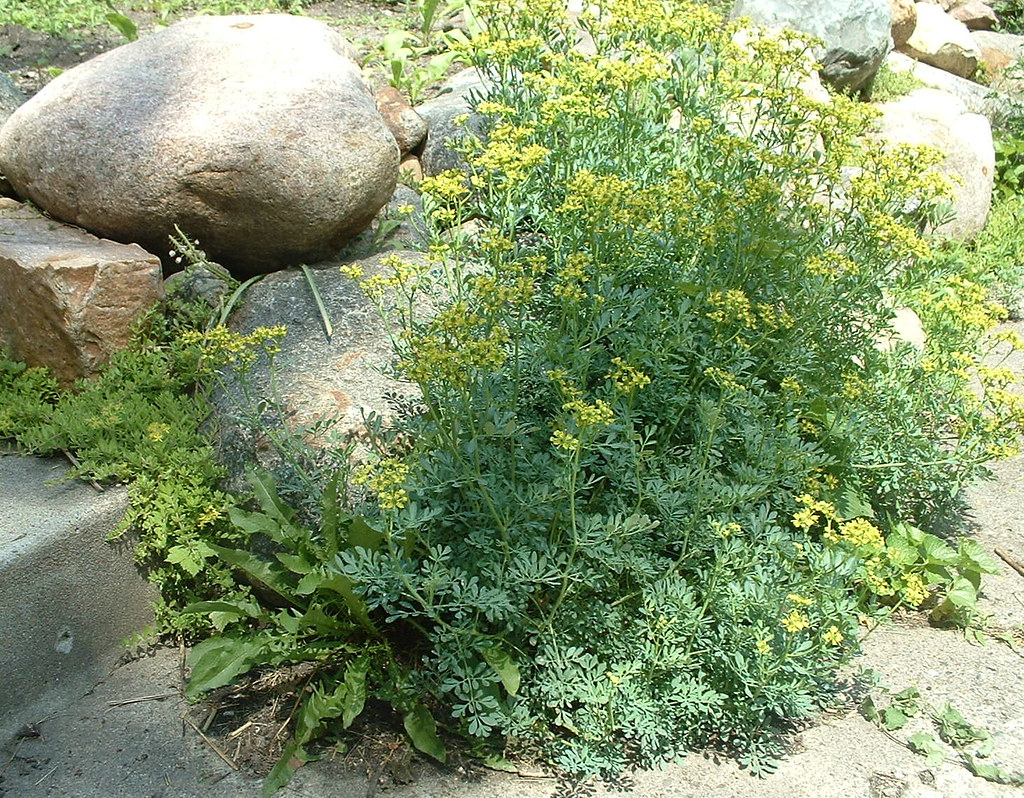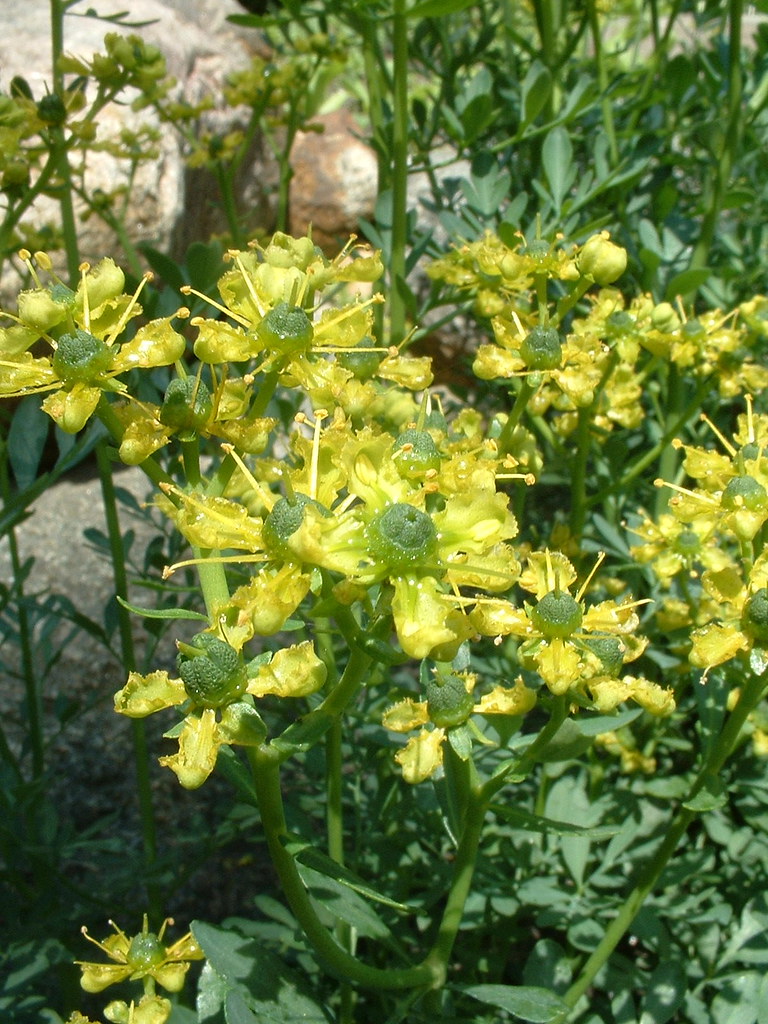 ay in the garden, and fortunately Fernymoss was able to get these shots in the morning before we started working in earnest. This is one of our three Rue plants (Ruta graveolens) that have long been part of the front boulder bed.
ay in the garden, and fortunately Fernymoss was able to get these shots in the morning before we started working in earnest. This is one of our three Rue plants (Ruta graveolens) that have long been part of the front boulder bed.Again, it's one of those foundation plants I referred to in last night's post on Yarrow. We felt it was a must have herb, not just due to its historical, magical and medicinal value, but simply because we really think the grey-green foliage brings a unique texture to the gardenscape. And as such, I fear we often overlook this erstwhile perennial in favor of its flashier neighbors. Last night, when thinking about what I could find to post today, it occurred to me that I was being a bit of a dunderhead because we had three lovely specimens of Rue blooming their hearts out ... so priority number one today was to get a few pictures of them to show what a unique plant this is.

As perennials go, Rue is about as carefree as they come, once it has been well established its first year in the border. It's hardy over a wide range, down to Zone 4 at least (and perhaps beyond), it has no natural pests (in fact it attracts beneficial insects, beetles and wasps that are protective of your other garden plants) and it thrives in rather poorish soil. It also has a restrained propensity to self-seed judiciously, which is another pleasant advantage. This particular specimen came from a seedling that came up at the base of the rocks back in 2004, where we thought it looked natural enough, so we left it there. Further, in milder winters, Rue will even stay evergreen through much of the winter ... All you really need to do in the spring is just cut back the dead foliage and let it go through its cycle once again. It prefers full sun, is not picky about soil, and is remarkably drought and cold tolerant. You couldn't ask much more of such a lovely herb that will grace your perennial border for many years.

I alluded to its herbal value when I began here, and though I don't really know a whole lot about it other than what Fernymoss has told me and what I've found in the precious few online sources I've read about this plant. A Modern Herbal, one of the classics of herbalism, has a pretty good summary of its history and uses in case you're interested in learning more about Rue. Apparently it has the reputation of being "the bitterest herb," surpassing even Wormwood, so it's not exactly something you'd want to put in your salad at dinner ... though the ancient Romans were said to have done this and supposedly even some modern Italians make it part of their salads. Given its bitter reputation, though, I think I'll stick to nasturtium flowers in mine, thank you.
Notes on the photos taken June 6, 2007, courtesy of Fernymoss:
The first shot is of the entire plant at the boulder base just beside the walk leading up to the house. The second is a detail of part of the same plant ... the third is a very close close up detail. I think you'll agree ... it has most fascinating inner bits that remind me more than a little of the movie Alien.









3 comments:
Hi IVG.
Nice post and nice picture Fernymoss.
I was most impressed with the bolders you have. I've been wanting to bolder in my whole yard for years now. :)
Have a good one.
Howdy FM, I got a bit too into slacking in the past few days and now that my vacation is slipping away, I'm back to manic-panic planting again! I hope I'm giving you some more ideas of easy care perennials you might want to consider ... I think you should at least get a Dragon Arum, since that only requires digging a hole once and paying a bit of attention to it later when it comes up ... I think even you could handle that, and it might just scare the snakes away with its smell! Something to think about, my friend.
Yep, those are fantastic flowers! I love the way the IBs pop out, like the petals aren't even a priority. :) And it really does fill in well around the rocks in that part of the garden.
Post a Comment